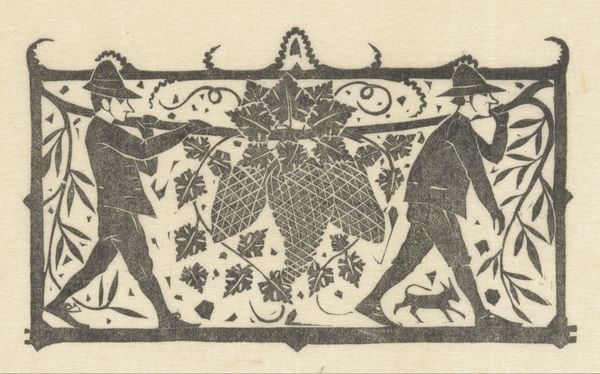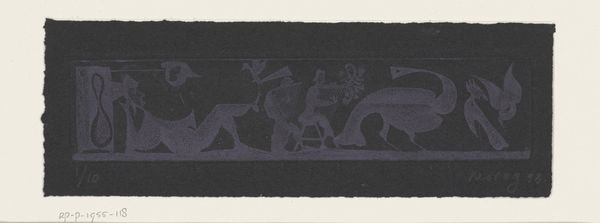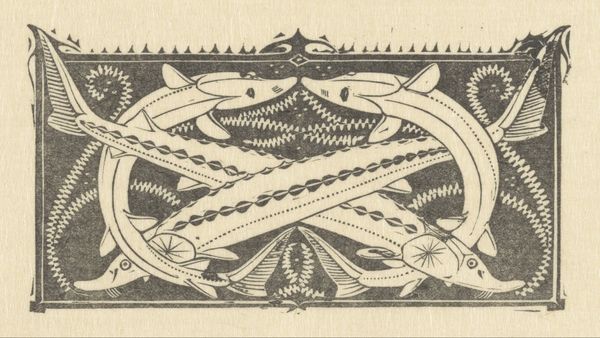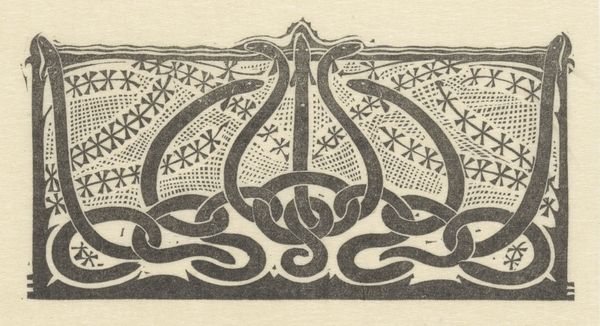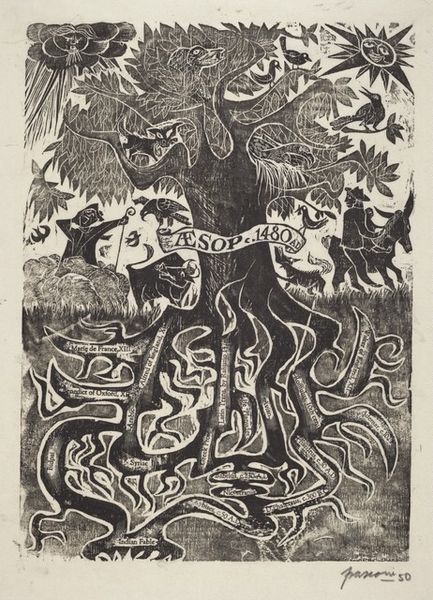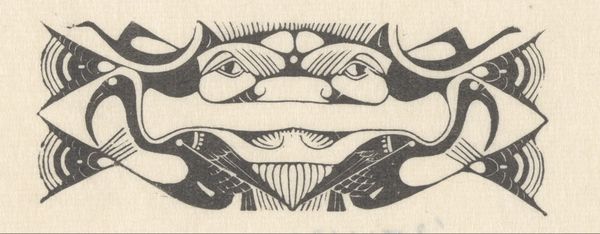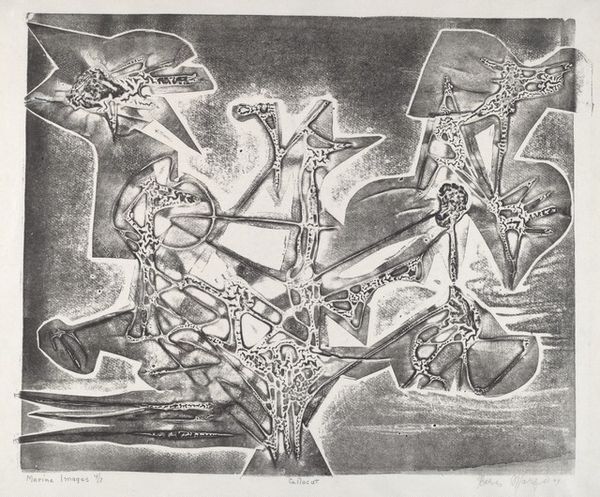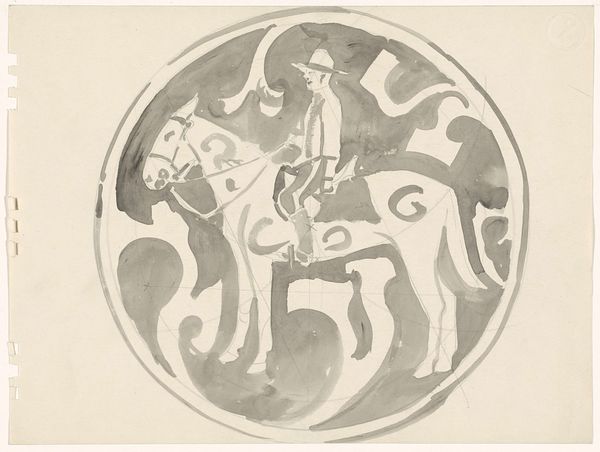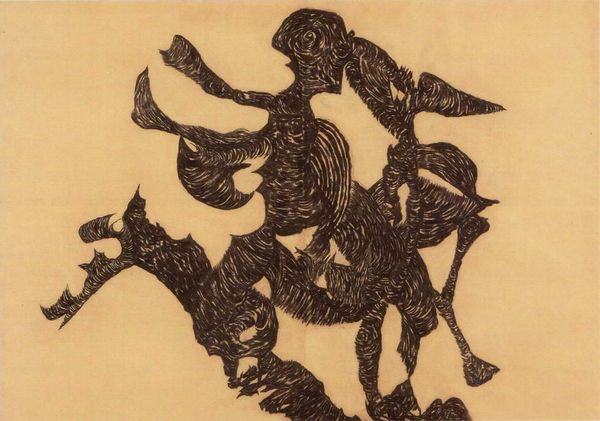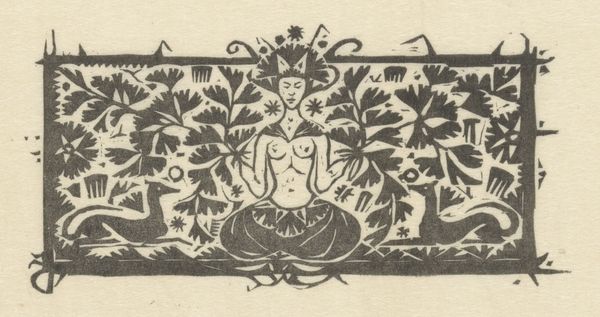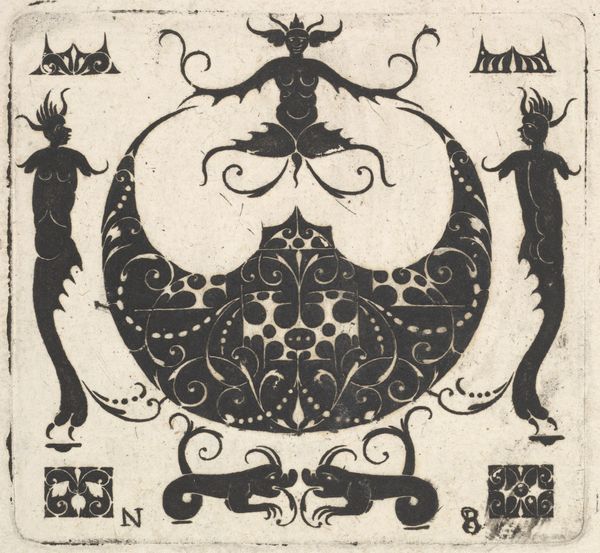
Kopvignet met ruiters in 'Kunst en samenleving' 1893 - 1927
0:00
0:00
#
pen drawing
#
pen sketch
#
old engraving style
#
ink line art
#
linework heavy
#
ink drawing experimentation
#
pen-ink sketch
#
pen work
#
sketchbook drawing
#
doodle art
Dimensions: height 65 mm, width 117 mm
Copyright: Rijks Museum: Open Domain
Editor: Here we have Gerrit Willem Dijsselhof's "Kopvignet met ruiters in 'Kunst en samenleving'", a pen drawing, dating from 1893-1927. I’m struck by how much the linework and heavy ink creates a very formal and heraldic atmosphere, almost like it could be on a bookplate. What do you see when you look at this piece? Curator: It’s interesting you say heraldic. I’m drawn to how Dijsselhof employs a deliberately archaic style in his work for "Kunst en Samenleving" or "Art and Society." The riders blowing horns evokes images of medieval pageantry, linking artistic creation to a sense of tradition and social purpose. What would that tradition or social purpose be, do you think? Editor: Perhaps to inspire unity or announce something important within the community? It also seems that with this choice Dijsselhof sought to ennoble his subjects. Curator: Exactly. And consider the context. "Kunst en Samenleving" promoted socialist ideals and the role of art in shaping a better society. Dijsselhof is connecting artistic practice to larger socio-political movements, albeit in a subtly propagandistic manner. He presents a romanticized view of leadership. What kind of message would an illustration like this send about the magazine itself? Editor: That the magazine takes on a stately demeanor, perhaps presenting a noble, elevated cause, to create social impact? The symbolism here adds another layer. Curator: Precisely. The very deliberate composition suggests careful consideration about art's role within society. It wasn't simply decorative, it was a call to action, an attempt to elevate art's position within the political landscape of the time. I had not considered the use of heraldry as potentially symbolic. Thanks for the point of view! Editor: It’s interesting to see how art, even in a seemingly simple drawing like this, is so closely tied to the cultural and political forces of its time!
Comments
No comments
Be the first to comment and join the conversation on the ultimate creative platform.
